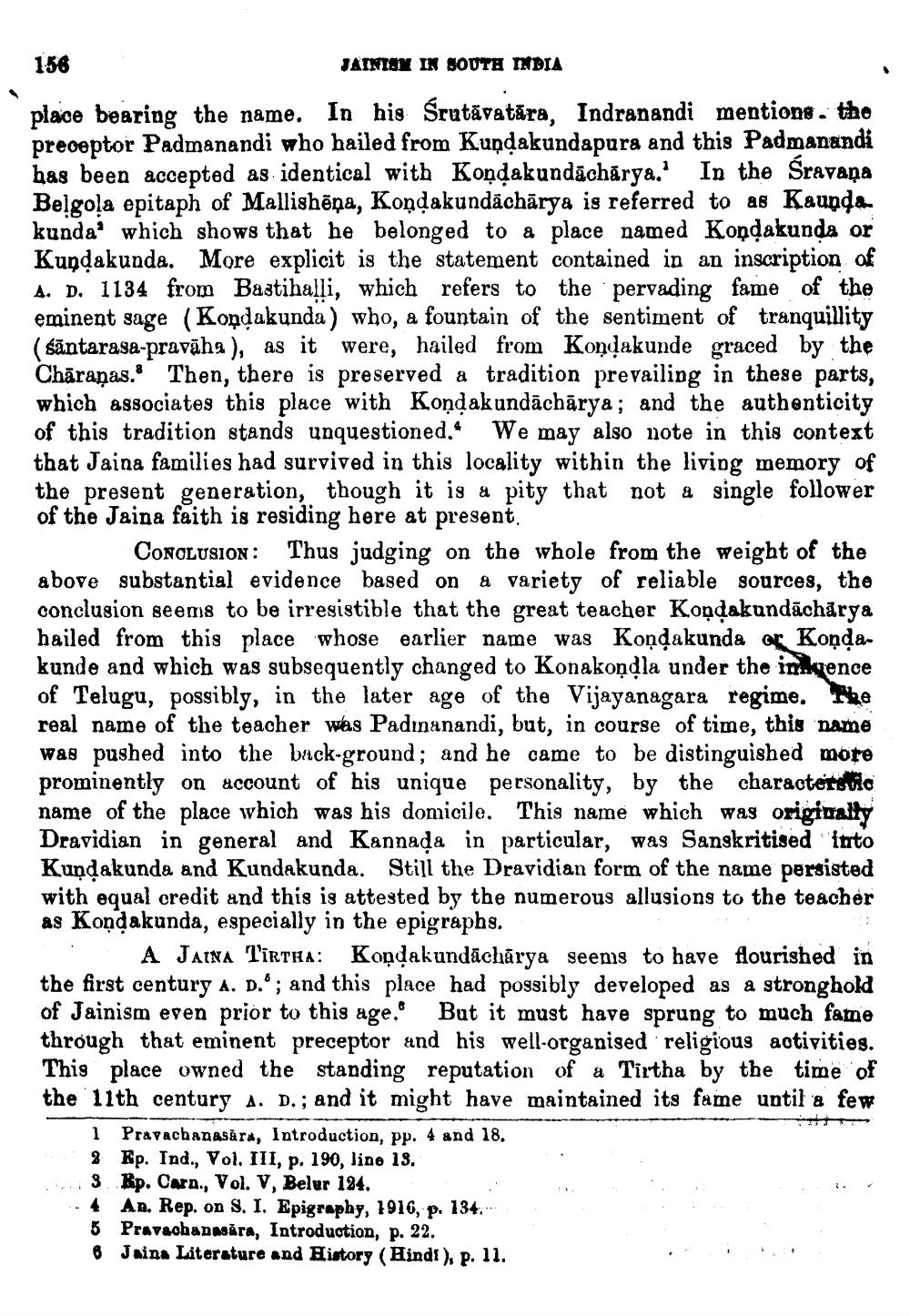________________
·
156
JAINISM IN SOUTH INDIA
place bearing the name. In his Śrutavatara, Indranandi mentions. the preceptor Padmanandi who hailed from Kundakundapura and this Padmanandi has been accepted as identical with Koṇḍakundacharya.1 In the Śravana Belgola epitaph of Mallisheņa, Koṇḍakundacharya is referred to as Kaunda kunda' which shows that he belonged to a place named Kondakunda or Kunḍakunda. More explicit is the statement contained in an inscription of A. D. 1134 from Bastihalli, which refers to the pervading fame of the eminent sage (Kondakunda) who, a fountain of the sentiment of tranquillity (santarasa-pravaha), as it were, hailed from Kondakunde graced by the Charanas. Then, there is preserved a tradition prevailing in these parts, which associates this place with Koṇḍakundacharya; and the authenticity of this tradition stands unquestioned. We may also note in this context that Jaina families had survived in this locality within the living memory of the present generation, though it is a pity that not a single follower of the Jaina faith is residing here at present.
CONCLUSION: Thus judging on the whole from the weight of the above substantial evidence based on a variety of reliable sources, the conclusion seems to be irresistible that the great teacher Kondakundachārya hailed from this place whose earlier name was Kondakunda or Kondakunde and which was subsequently changed to Konakondla under the invence of Telugu, possibly, in the later age of the Vijayanagara regime. The real name of the teacher was Padmanandi, but, in course of time, this name was pushed into the back-ground; and he came to be distinguished more prominently on account of his unique personality, by the characterstic name of the place which was his domicile. This name which was originally Dravidian in general and Kannada in particular, was Sanskritised into Kundakunda and Kundakunda. Still the Dravidian form of the name persisted with equal credit and this is attested by the numerous allusions to the teacher as Kondakunda, especially in the epigraphs.
A JAINA TIRTHA: Kondakundacharya seems to have flourished in the first century A. D.; and this place had possibly developed as a stronghold of Jainism even prior to this age. But it must have sprung to much fame through that eminent preceptor and his well-organised religious activities. This place owned the standing reputation of a Tirtha by the time of the 11th century A. D.; and it might have maintained its fame until a few
++
1
Pravachanasara, Introduction, pp. 4 and 18.
2 Ep. Ind., Vol. III, p. 190, line 13.
3 Rp. Carn., Vol. V, Belur 124.
4
An. Rep. on S. I. Epigraphy, 1916, p. 134.
5 Pravachanasara, Introduction, p. 22.
6 Jaina Literature and History (Hindi), p. 11.




